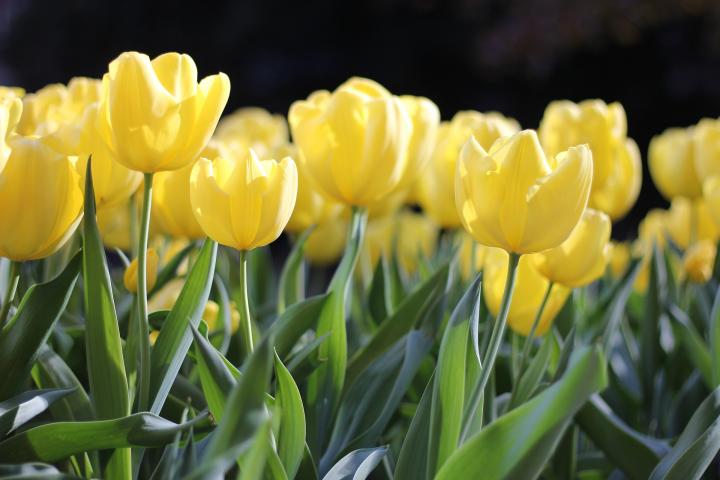Long live the tulip! Plant them in the fall and enjoy as these brightly colored jewels brighten our days in early spring. We truly look forward to seeing those blue-green leaves start to emerge as the earth awakens from its winter sleep! Here are our tips on how to plant and care for tulips.
About Tulips
Tulips normally begin emerging from the ground in late winter or early spring. If unseasonably mild weather causes premature growth in winter, the danger is not as great as it may seem. Tulips (and daffodils, too) are quite cold tolerant. If freezing winter temperatures return, it may delay growth, however. Snow is actually helpful in this case, as it can insulate the foliage from extreme cold.
Plant in the Fall for Spring Blooms!
Tulip bulbs are planted in the autumn before the ground freezes. By planting varieties with different bloom times, you can have tulips blooming from early to late spring. Some types are good for forcing into bloom indoors and most are excellent for use as cut flowers, too.
Tulip flowers are usually cup-shaped with three petals and three sepals. There’s a tulip for every setting, from small “species” tulips in naturalized woodland areas to larger tulips that fit formal garden plantings from beds to borders. The upright flowers may be single or double, and vary in shape from simple cups, bowls, and goblets to more complex forms. Height ranges from 6 inches to 2 feet. One tulip grows on each stem, with two to six broad leaves per plant.
Are Tulips Annual or Perennial Bulbs?
Although tulips are technically a perennial, many centuries of hybridizing means that the bulb’s ability to come back year after year has weakened. Therefore, many gardeners treat them as annuals, planting new bulbs every autumn. The North American climate and soil can’t replicate the ancient Anatolian and southern Russian conditions of their birth. Gardeners in the western mountainous regions of the U.S. come closest to this climate, and may have more success perennializing their tulips.












Comments